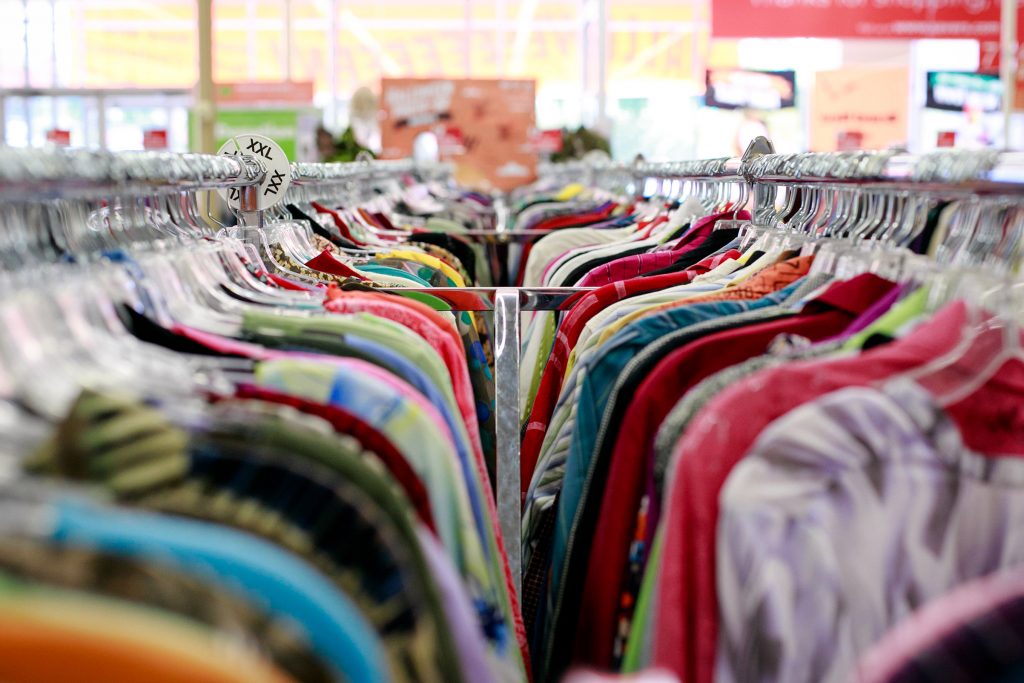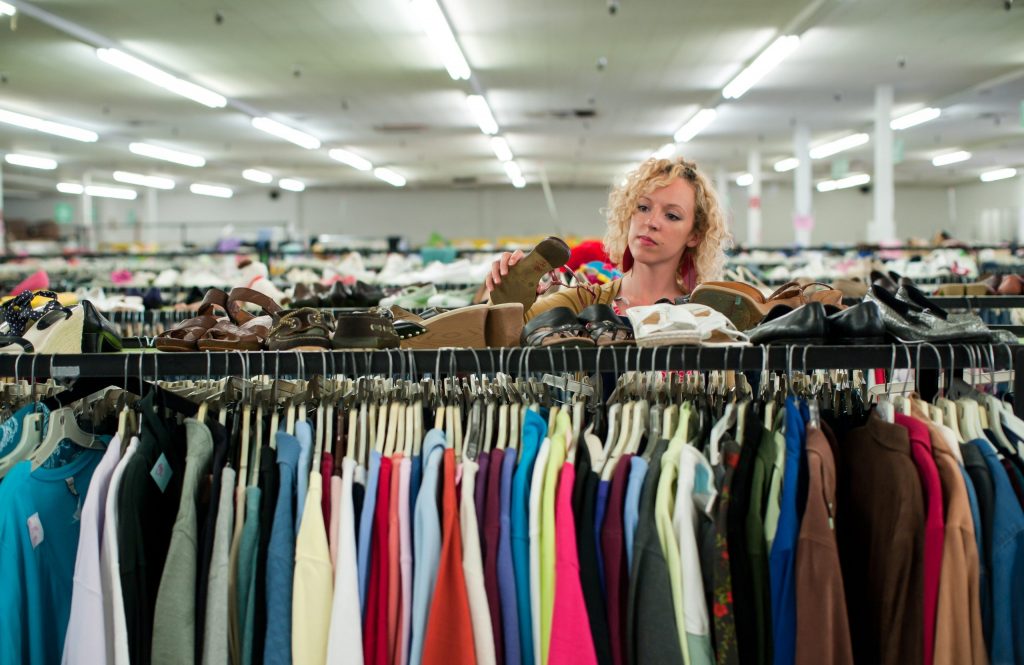The humble thrift store tends to lose popularity when the economy is booming. However, when people start thinking about a recession, they also start thinking of thrifting. Owning your own thrift shop is a great business when the economy is lagging and folks don’t want to pay for brand new things.
Starting a thrift store has changed as the online shopping market has expanded. A decade ago, you’d have to find a shop, pay for rent as well as racks, shelving and more. These days all you need is a computer and internet connection to get up and running within 24 hours.
This is not the garage sale of your mum or the musty, poorly-lit store you were visiting as a child. There are people who make a six-figure income from their online thrift stores. You can start off by selling your own gently-used goods and expand from there. We’re about to tell you how.

What Are Thrift Stores?
Thrift stores are places where you can buy used goods for really low prices. There are various types of thrift stores, but they have the same basic concept.
Here are the different types of thrift stores you may have come across.
- Non-profit thrift stores are run by organizations such as the Salvation Army or Goodwill to support their efforts. Consignment shops are thrift shops where people sell their used items and then share the money with the owner of the store.
- The flea market is a single shopping mall or area where several thrift stores come together to sell their products. Also, a yard sale is a kind of thrift shop, just one on an informal and time-limited basis.
- And you can see that a thrift store concept can involve several different kinds of stores. Even something like selling on eBay may be called a thrift store as most of the items are used.
- When you know how different set-ups can mean thrift shop, you can start looking at how you can start your own shop with some unique advantages over conventional thrift stores.
Your Beginners Guide
Find Your Goods
The big challenge with starting a thrift store is figuring out where to get decent stuff and keep getting it. People are used to donating their used or discarded clothes to country-wide thrifts run by charities. Most people don’t even know that these thrift stores just give the charity a small percentage of profit.
They’re working for profit, and that’s a considerable income. If you have a charity with which to associate your business and accept donations, that is an option. You can also reach out to friends and family for their stuff – giving them a bit of the profit might give them incentive to collect items for you.
Go Direct
You cut out the middleman by purchasing clothes directly set up the company to make big profits. Even if you’ve sold your clothes for an average of say $2.00 per piece, you’re still making a significant profit. You will also obtain e-mail addresses and phone numbers when you pick up the items.
Find Reliable Transportation
To make the pick-ups, you’ll need an SUV, pick-up, or some other sort of truck. It takes up a lot of space when you buy a few hundred pounds of clothing. In most places, five to 10 thousand pounds of clothes and shoes can usually be purchased within two weeks.
Put Up An Advertisement
After you have figured what types of items you’re going to get and sell, you need to market yourself. You can create advertisements around your neighborhood, and online to be able to generate more buzz around your shop. If you’re forecasting, make sure to decide on your target market and work your advertisement from there.
Do Thrift Stores Make A Profit?
Thrift stores sell their goods on the cheap so it can be hard to make a profit with a brick-and-mortar shop. Research reveals that for every $100,000 of sales, the general retail industry makes a profit of around 5 percent on sales, which would mean revenue of about $5,000.
Most people don’t expect to pay more than a few bucks for things when their thrifting. But in regular stores, it’s quite normal to shell out $50 for a t-shirt. Given that comparison, thrift stores do end up making less while having the same costs as regular retail stores.
For-profit thrift stores incur sales taxes of up to 30 percent, and then operators incur their income taxes on top. Making your thrift store a limited liability company (LLC), can save you tons of that money. This way, you’re taxed at your own income level and don’t have to worry about the store’s financial liability.

How To Start Your Business Online
Launching your store online can significantly increase your sales and your profit. You can hit a broader consumer audience and save on the costs of a physical store. But you also have to remember that no one is going to want to pay $10 in shipping on a $2 item.
So creating incentives like discounts when customers buy more items can help you in that area. You can also choose to sell expensive used stuff. A designer handbag that originally cost $1000 can easily be resold for a few hundred bucks.
There are a ton of online platforms like Shopify where you can set your store up. They have various pricing plans, but it will cost you less than $100 a month to set it all up.
How To Assemble A Thrift Store Conclusion
There are pros and cons to a physical store as well as an online store. You just need to figure out who you’re market is going to be and then decide the best way you can reach them. If you want to target Gen Z, online and more expensive items might be best.
If you want to help low-income earners, maybe a physical storefront is better. You can make this business successful by simply having a sit down with yourself and figuring out what your ultimate goal is. And then from that point forward, it should be smooth sailing.









